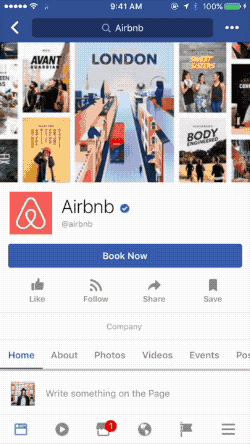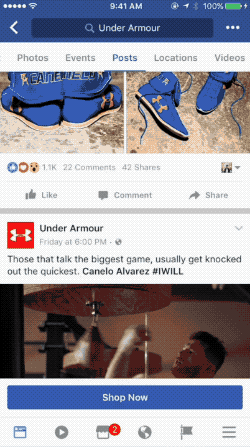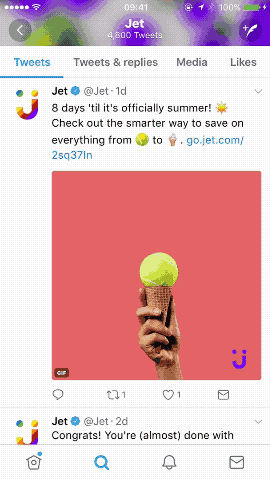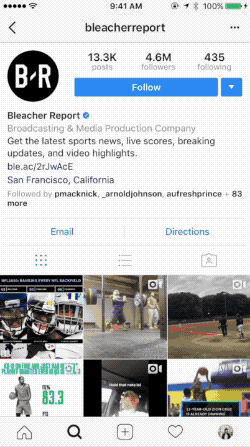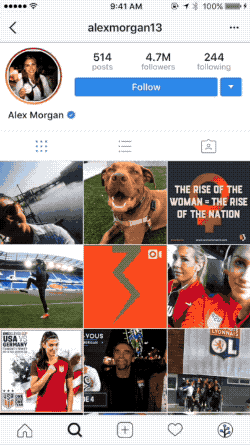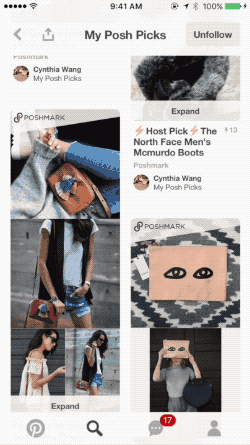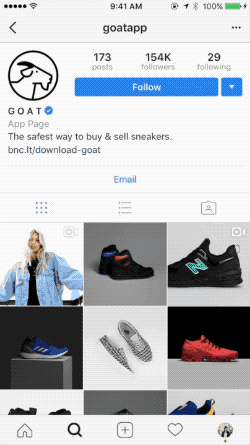Here’s the thing about deep linking across social media platforms: you probably understand more about its intricacies than you’d expect.
At its core, deep linking provides users with access to specific web pages rather than homepages on the web. For example, say I’m shopping online at Nordstrom.com. A traditional link takes me to the homepage, while a deep link navigates to a specific item—such as the new running shoes I need to buy in order to (very) belatedly make good on one of my New Years’ Resolutions.
Though many of us don’t realize it, we effectively interact with web-based displays of deep linking all the time.
Why Deep Linking from Social Media Matters
For years, mobile marketers across the world were limited by the scope of deep linking. If you clicked on a link while browsing social media on your phone, it would open in the mobile web—even if the corresponding app was installed. Those running shoes I mentioned earlier? Most definitely would’ve opened in the mobile web.
Enabling such pages to open in apps rather than in the mobile web is essential for mobile growth and development. By offering deep links that direct users to specific content in apps, Branch has seen brands double their retention rates. In fact, industry findings suggest that app audiences are 20x more engaged than mobile web audiences and convert 3x more in app than in the mobile web (comScore 2016 App Report).
Driving Organic Growth by Deep Linking from Social Media
Deep linking straight to app-based content is all well and good, but there’s one question many on many marketers’ minds: how do I grow a native app organically?
Social media is undeniably a great channel, one already being used heavily by consumers to discover new apps and content. Deep linking social media content on mobile can acquire new users, retain current users and motivate growth.
Still not convinced about the impact social channels can have on growth? According to comScore’s 2016 US Mobile App Report, six of 2016’s top 25 apps are social. Facebook alone accounts for 76% of mobile app time spent on social networking (comScore 2016 App Report).
Deep Linking from Facebook
Facebook is one of the many social media platforms that have a “walled garden.” A “walled garden” is how Facebook keeps their users inside of their app. They have their own in-app browser that prevents users from leaving their platform, and especially prevents brands from deep linking directly into their mobile app. There are two ways to deep link your app, however.
Our first use case proposes posting the generated quick link on your Facebook page. A quick link is a Branch feature that allows you to create links to your app that work on all devices and channels. In this example, an Airbnb link is posted on their page with an action to book now. Watch what happens:
In order to escape the walled garden, we have to press the open app button. Currently, there is no way to work around this.
Airbnb has seen a lot of success using Branch links in all of their marketing channels. Its app install rate increased by 19% in just six months, during which time they also saw 3.5 million app downloads. This success is accredited to all of its marketing channels—but social media plays a large part, driving a large amount of engagement to their app.
The other option is to send your users to the mobile web. In the use case below, you can see that Under Armour uses Journeys (the banner that prompts you to download the app) to drive app engagement from Facebook. By clicking the banner, we are taken out of the Facebook app, to the app store and encouraged to download the app. From there, we can experience Under Armour’s app where the user experience is superior to the mobile web.
Deep Linking from Twitter
Jet, an online retailer, uses Quick Links across all of their social channels:
By clicking the link in their tweet, we are taken out of Twitter. Because of Twitter’s latest update to their app, the current process to deep link out of Twitter is through Safari. From there, the best practice is to display a banner to link users into your app. By using this banner, Jet has seen 103% increase in conversion to purchase behavior.
Deep Linking from Instagram
Bleacher Report is another example of a brand that deep links from social media networks. Bleacher Report directs their users to the mobile web first and displays a banner. After a user clicks the install banner, they are directed to the app store to download the app. For Instagram specifically, this is the only way to currently deep link, besides seeing the pop up that warns us we are leaving Instagram and opening another app.
We also got a sneak peek into what Instagram is looking to do in the future. Currently, only verified accounts can add a link into their Instagram stories. We caught a quick video from SeatGeek influencer Alex Morgan, deep linking users to the SeatGeek app from her Instagram story. Check it out below:
Deep Linking from Pinterest
Poshmark uses deep links to send users to the mobile web. As you can see, once there, we are prompted by the banner to open the listing in app.
What if the App isn’t Already Installed?
No problem! Deep links absolutely can route users to specific content (and preserve the data surrounding their visits!), even through the install process in the App Store or Play Store. Below is an example of what the flow looks like when the deep links take you through the App Store.
GOAT, an app dedicated to buying and selling exclusive shoes safely, uses Quick Links across all of their social channels. With Quick Links across platforms, the app’s click to install rate on Twitter and Instagram has risen to 48%. (Click here to read our Q&A with Sen Sugano, GOAT’s VP of Marketing!)
Creating Social Media Deep Links
In order to deep link from social media platforms, you must create a quick link, a link to your app that works across every device, operating system, and channel. Brands have two options to create quick links using Branch.
The first way is through our Branch dashboard. You can read all about how to create links through our dashboard, but it is imperative that you first have dashboard access.
If you don’t have dashboard access, you can also create quick links through our Chrome Link Creator. Use our documentation to learn how to create the links and how to track them. We’ve even written a How to Create Cross-Platform Deep Links in Less Than 3 Seconds post, just for you.
It’s also quickly worth mentioning that Branch is not your only option to set up deep links from social media platforms. We’ve listed some other options below:
- The Mobile Deeplinking Project is an industry-wide effort to help app developers create ideal cross-platform user experiences using deep links.
- Apptamin assembled a list of the best app-marketing tools. Check out the deep linking section.
- Build your own! We don’t necessarily recommend this, as building a linking infrastructure has taken over two years of hard work to refine, but if you are up to the challenge, we welcome you to give it a shot. Here are some tips on making dynamic and reliable links on mobile.
Adding Deep Links to Your Social Advertising
We shared use cases for organic social media posts, but we also have plenty of guides for applying deep linking to paid social media ads.
- Instagram Install Ads: Instagram Install Ads let you pay to be in front of your target customers. By setting up the ads with deep links, you push a user through the app store to the content they clicked while driving app installs.
- Facebook Dynamic Ads: Facebook’s Dynamic Ads have been cited as one of the most valuables resources for paid app installs. Adding Deep Linked Feeds to your ads will not only add deep links to your Dynamic Ads, but it will also increase your user experience and ROI.
- Twitter App Cards: App Cards are Twitter’s version of install ads. By deep linking users through paid ads, you should see an increase of installs and a better user experience.
Nearly all of the above examples can only be powered by Branch. Although social media can be a great way to leverage your brand, social media platforms clearly act as walled gardens unless you pay (or find ways through them, as we have). Employing deep links improves your brand’s organic growth by giving you the control to direct your consumer where they want to go, regardless of the platform.























